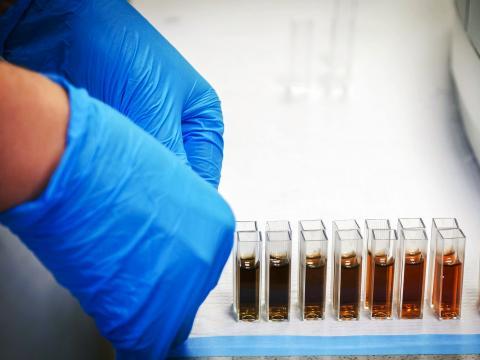
BMC seminar Thursday 10th of February at 12:00 live via Zoom: https://eu01web.zoom.us/j/64711535805
This week we will start a series of four seminars on BMC infrastructure.
1. Electrophysiology core facility
Ragnhildur Þóra Káradóttir
12:00 - 12:15
A core facility in cellular physiology at the Department of Physiology at the University of Iceland. This facility will be fully integrated with the BioMedical Centre (BMC). Allowing Icelandic researchers to integrate these novel methods, like electrophysiology (e.g., single-cell patch-clamp recordings), ion-sensitive imaging (e.g., calcium, potassium, sodium, hydrogen, and magnesium), neurotransmitter, metabolic, and voltage imaging into their research. Thus providing a platform for Icelandic scientists to investigate mechanisms of cellular function and dysfunction
in diseases, in greater detail than ever before.
2. Ultrasound system for laboratory animals
George Kararigas
12:15 - 12:30
The VisualSonics (VSI) Vevo® high-resolution imaging systems are the only commercially-available ultrasound-based micro-imaging systems (15 to 70+ MHz) designed specifically for small animal research. The system enables the researcher to obtain in vivo anatomical, functional, physiological and molecular data simultaneously, in real-time and with resolution down to 30 μm. Unlike other imaging platforms that offer acceptable results when attempting to image static anatomical structures, the Vevo imaging station allows the user to record dynamic processes in real-time as well. These unique features of both anatomical/physiological and dynamic imaging, in a single platform, translate into both user efficiency as well as cost effectiveness for the laboratory.
3. Rodent image-guided laser system to induce retinal and choroidal neovascularization
Þór Eysteinsson
12:30 - 12:45
One of the vision-threatening symptoms of several retinal diseases, such as diabetic retinopathy and age-related macular degeneration (AMD) is retinal and/or choroidal neovascularization (CNV). The new vessels formed are weak and prone to leakage, which causes damage to retinal tissue. Treatment involves preventing or reversing neovascularization. A variety of processes in the choroid and retinal pigment epithelium (RPE) are known to or hypothesized to affect CNV. To test putative treatments or hypotheses about the processes involved, a laser-induced model of CNV in rodents has been developed. The model involves delivering laser photocoagulation to four locations in the fundi of rodents, away from major retinal vessels, which induces a small break in the Bruch´s membrane between the choroid and the RPE. The laser beam and the location of the photocoagulation are guided through the Micron IV rodent fundus camera, and the quality and success of the photocoagulation can be evaluated and monitored with fundus images and optical coherence tomography (OCT) scans of the retinal layers, RPE and the choroid. The break in the Bruch´s membrane induces the release of vascular growth factors from the RPE, retina and choroid, and a localized CNV at the break with time, which can be quantified and monitored, and the effects of drug intervention or mutations in specific genes assessed over time.
4. SAMSNIÐ proposal update on sequencing facilities and flow cytometry infrastructure
Hans Tómas Björnsson
12:45 - 13:00
Our SAMSNIÐ proposal focuses on building common core facilities for biomedical sciences. First year, received funding for animal phenotyping (animal imaging). This year's focus was on analysis on the cellular level. Main focus of the current cycle was flow sorting but as a secondary aim we also received funding for some sequencing instruments for library prep (iSeq) and long-range sequencing. Finally, long-range sequencing relies on use of artificial intelligence so we have a special computer workstation that will be associated with Nanopore setup. We envision this setup also being used for running AlphaFold analysis, which is one of the biggest breakthroughs of the last year. We envision that these core facilities will help potentiate single-cell analyses through BioMedical Center.